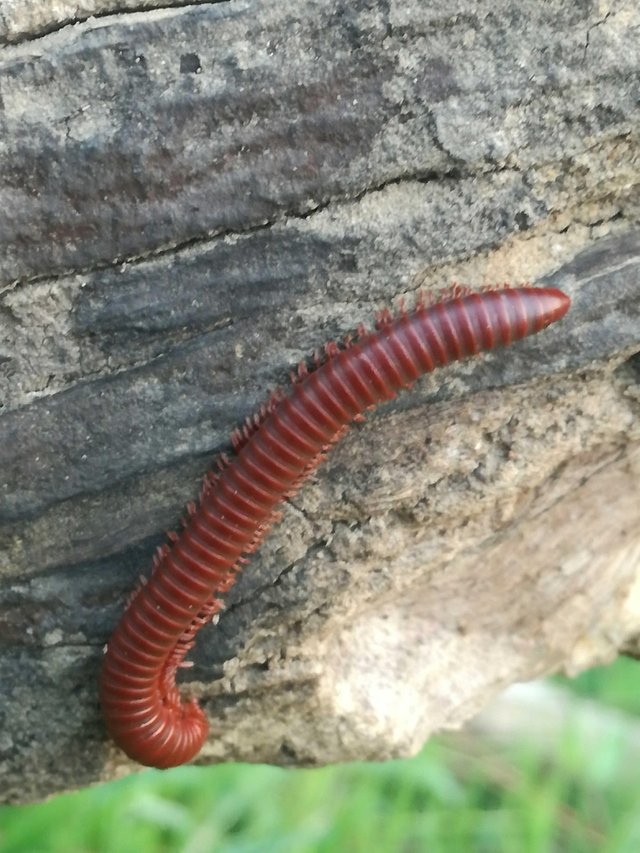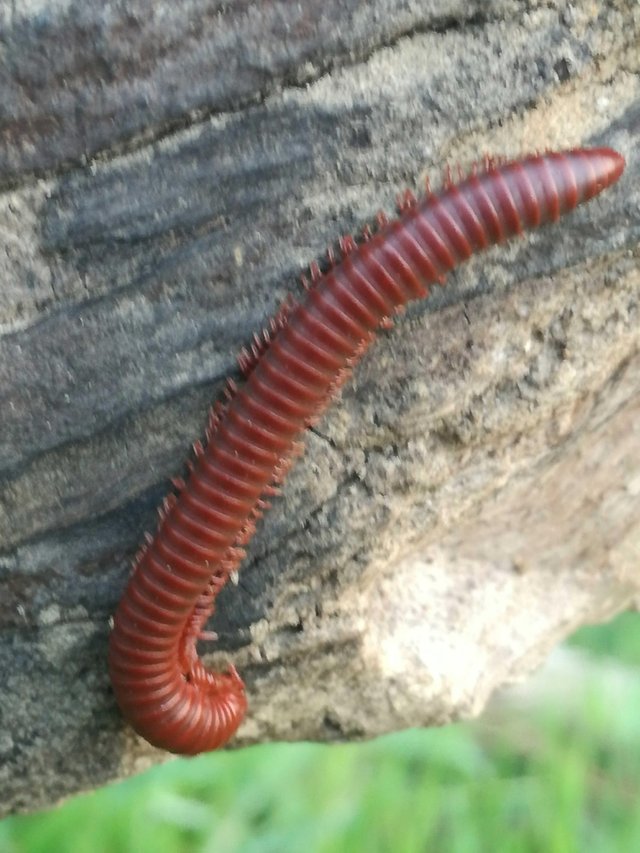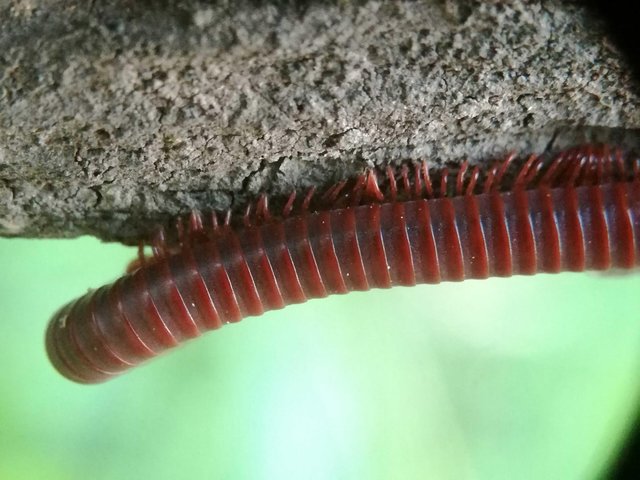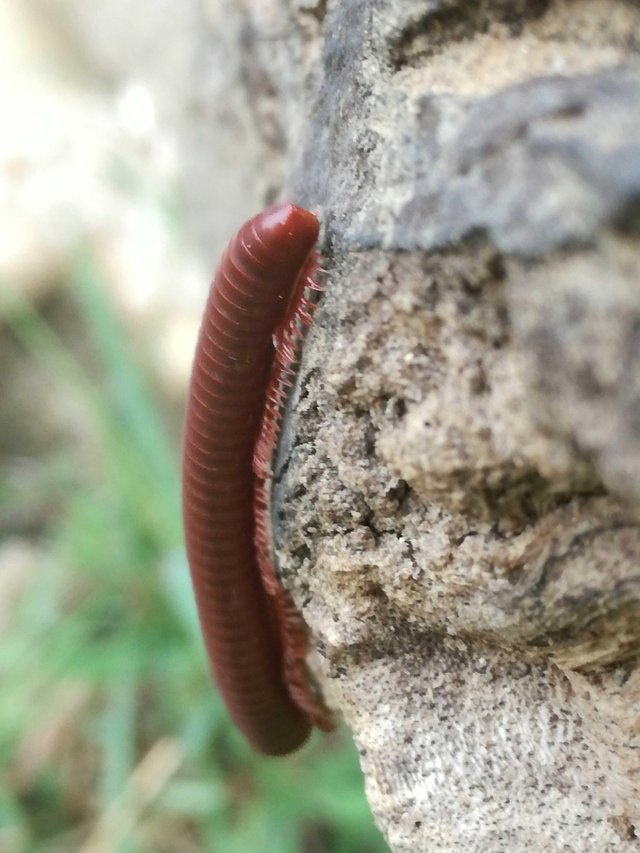Let's Get a Glimpse of The Thousand Feet

The millipede is an invertebrant herbivore that has two pairs of legs per section. The animal body is cylindrical, the number of parts between 25-100 parts and multiply by laying eggs. We all know the animal whose name is a thousand feet has a distinctive appearance that makes it easy to distinguish from other animals. Body length between 20-25 cm like a worm and even a sapai 30 cm, and equipped with small legs at the bottom of his body. When walking, a thousand feet rip his legs like a rowboat also has a pair of antennas on the front of his head. Unlike its name, a thousand feet does not have a thousand feet but only a name because it has many legs that are difficult to calculate the number of legs as a whole.
The majority of millipedes live from eating the remains of plants. The millipede has an important role in maintaining the cleanliness of the forest floor and improving soil fertility because the impurities it releases help to increase the content of nutrients in the soil which can in turn be utilized by plants. In addition to the remains of plants, the millipedes also eat moss and mushrooms. Some species of millipedes also exist that are omnivorous plant and meat-eating aliens in which the meat they eat is the flesh of small animals such as insects.
A thousand male legs have special legs that serve to accommodate the sperm into the genital hole of a thousand female legs. After marriage, a thousand female legs then put their eggs into the ground where the number of eggs issued can reach 2,000 grains.
New breeding legs are pale and have only 3 to 4 pairs of legs. But along with its growth, the baby's thousand feet will experience a change in the amount of leg skin increase. The food of a thousandfoot infant is basically no different from that of a thousand adult legs. A thousand young legs also often eat their own skin after making a change of skin. Maximum age varies depending on the type of each. However there are types of millipedes having an age of up to 7 years.
The millipede is not a deadly animal to humans and should be left alive if it does not interfere because of its important role in maintaining environmental fertility. But in fact, these animals are still often killed intentionally. Either because humans feel scared and disgusted with his appearance, or because the man who killed him can not distinguish the thousandth leg with the centipede that is toxic. In homes that have yard, thousands of legs are sometimes seen wandering around in the house because they avoid rain seeking shade.



If the enemy has already caught himself, the thousandth leg will roll itself into a ball and use his hard skin as a shield. But if the enemy still insists on attacking, the thousand feet will release the liquid. The effects of these fluids vary, ranging from a limited smell to sting that can blister insects. The liquid itself is not harmful to humans as long as it is not exposed to the eye.
Millipedes use the holes in the side of his body to breathe, which amounts to 4 pieces on each side of his body. Since the millipede can not close its spirakel, the millipede can lose a lot of water vapor from within its body and die short of fluids if the ambient temperature is too high. To avoid this, a thousand feet choose a humid habitat as a place to live, for example on the forest floor. As a form of further anticipation, the millipedes are also more often out at night.
Just like small animals that live on the ground, the thousand feet are also vulnerable to prey by other animals. Some examples of predatory animals from the millipedes are birds, rats, frogs, turtles, centipedes, beetles. However, a thousand feet is not a helpless animal at all. As the most basic form of self-defense, millipedes rely on a color similar to the color of the soil to be hard to find. When resting, a thousand feet will hide in places hard to reach by enemies such as tree gaps and under fallen trees.